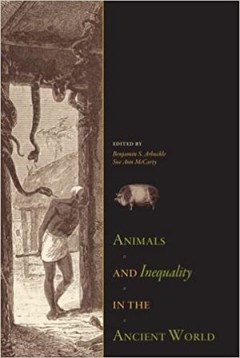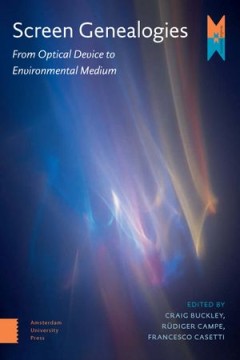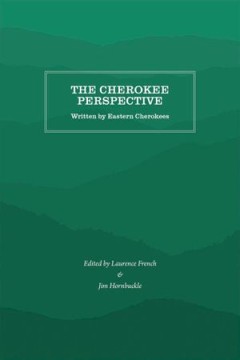Filter by

Models for Physics of the Very Small and Very Large
This monograph tackles three challenges. First, show a mathematics-based meta-model that matches known elementary particles. Second, apply models, based on the meta-model, to match other known physics data. Third, predict future physics data. The math features solutions to isotropic pairs of isotropic quantum harmonic oscillators. This monograph matches some solutions to known elementary partic…
- Edition
- 1
- ISBN/ISSN
- 978-94-6239-165-9
- Collation
- XII, 382
- Series Title
- Atlantis Studies in Mathematics for Engineering and Science
- Call Number
- -

Animals and Inequality in the Ancient World
Animals and Inequality in the Ancient World explores the current trends in the social archaeology of human-animal relationships, focusing on the ways in which animals are used to structure, create, support, and even deconstruct social inequalities. The authors provide a global range of case studies from both New and Old World archaeology—royal Aztec dog burial, the monumental horse tombs of C…
- Edition
- -
- ISBN/ISSN
- -
- Collation
- -
- Series Title
- -
- Call Number
- -

Screen Genealogies: From Optical Device to Environmental Medium
Against the grain of the growing literature on screens, *Screen Genealogies* argues that the present excess of screens cannot be understood as an expansion and multiplication of the movie screen nor of the video display. Rather, screens continually exceed the optical histories in which they are most commonly inscribed. As contemporary screens become increasingly decomposed into a distributed fi…
- Edition
- -
- ISBN/ISSN
- 9789048543953
- Collation
- -
- Series Title
- -
- Call Number
- 302.23 SCR s

Broadcasting, Voice, and Accountability A Public Interest Approach to Policy…
Participatory development and government accountability depend in part on the existence of media that provide broad access to information from varied sources and that equip and encourage people to raise and debate issues and develop public opinion. Conducive policies, laws, and regulations are essential for media to develop that are independent and widely accessible and that enable the expressi…
- Edition
- -
- ISBN/ISSN
- 9780472900466
- Collation
- -
- Series Title
- -
- Call Number
- 650

Home Truths? Video Production and Domestic Life
Over the past decade, the video camera has become a commonplace household technology. With falling prices on compact and easy-to-use cameras, as well as mobile phones and digital still cameras with video recording capabilities, access to moving image production technology is becoming virtually universal. Home Truths? represents one of the few academic research studies exploring this everyday, p…
- Edition
- -
- ISBN/ISSN
- 9780472900312
- Collation
- -
- Series Title
- -
- Call Number
- 778.59 BUC h

Home Truths?: Video Production and Domestic Life
Over the past decade, the video camera has become a commonplace household technology. With falling prices on compact and easy-to-use cameras, as well as mobile phones and digital still cameras with video recording capabilities, access to moving image production technology is becoming virtually universal. Home Truths? represents one of the few academic research studies exploring this everyday, p…
- Edition
- -
- ISBN/ISSN
- 9780472900312
- Collation
- -
- Series Title
- -
- Call Number
- 302.23 BUC h

The Cherokee Perspective Written by Eastern Cherokees
In 1973, Cherokee students at the Qualla Boundary started a student organization with the intention of improving the educational prospects among Native Americans attending non-Indian colleges and universities. Under the direction of Laurence French and Charles Jim Hornbuckle, the students interviewed Cherokee elders and received help from the American Indian Historical Society in order to gain …
- Edition
- -
- ISBN/ISSN
- 9781469638515
- Collation
- -
- Series Title
- -
- Call Number
- -

Aquaculture Perspective Of Multi-use Sites In The Open Ocean
marine; freshwater; offshore engineering; water policy; governance
- Edition
- -
- ISBN/ISSN
- 9783319450223
- Collation
- -
- Series Title
- -
- Call Number
- -

The Cherokee Perspective: Written by Eastern Cherokees
In 1973, Cherokee students at the Qualla Boundary started a student organization with the intention of improving the educational prospects among Native Americans attending non-Indian colleges and universities. Under the direction of Laurence French and Charles Jim Hornbuckle, the students interviewed Cherokee elders and received help from the American Indian Historical Society in order to gain …
- Edition
- -
- ISBN/ISSN
- 9781469638515
- Collation
- -
- Series Title
- -
- Call Number
- 302 FRE c

Animals and Inequality in the Ancient World
Animals and Inequality in the Ancient World explores the current trends in the social archaeology of human-animal relationships, focusing on the ways in which animals are used to structure, create, support, and even deconstruct social inequalities. The authors provide a global range of case studies from both New and Old World archaeology—royal Aztec dog burial, the monumental horse tombs of C…
- Edition
- -
- ISBN/ISSN
- 9781646422487
- Collation
- -
- Series Title
- -
- Call Number
- 930.1 ANI a
 Computer Science, Information & General Works
Computer Science, Information & General Works  Philosophy & Psychology
Philosophy & Psychology  Religion
Religion  Social Sciences
Social Sciences  Language
Language  Pure Science
Pure Science  Applied Sciences
Applied Sciences  Art & Recreation
Art & Recreation  Literature
Literature  History & Geography
History & Geography